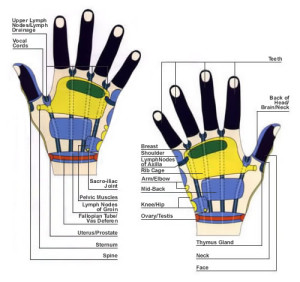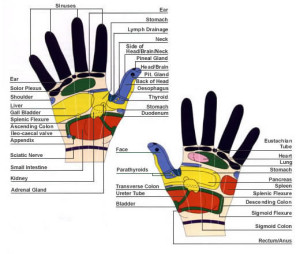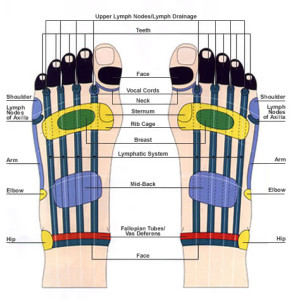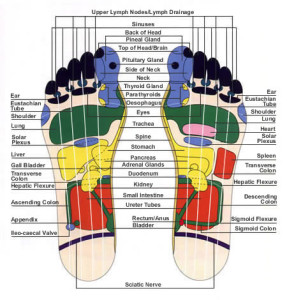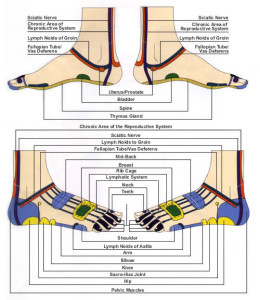Vitamins
VITAMIN A
Functions: Essential to membrane tissue and resistance to infections in sinuses, lungs, air passages, gastro-intestinal tract, vagina and eyes; prevents night blindness, sensitivity to light; promotes growth, vitality, appetite and digestion; helps prevent aging and senility; helps counteract damaging affects of air pollution.
Signs of Deficiency: Cystitis, sinusitis, bronchitis, gastritis; loss of appetite, retarded growth, eye problems-night blindness, red eyes, bad vision; defective teeth; dry, scaly skin, psoriasis, acne, wrinkles, pimples.
Sources: Dark green leafy vegetables, orange and yellow fruits and vegetables; such as carrots, yams, cantaloupes, apricots, whole grains, especially wheat, rice and oats, seeds, nuts and sprouts.
VITAMIN C
Functions: Essential for good collagen, the “glue” that holds the cells together; necessary for vital functions of all organs and glands, especially adrenals, thymus and thyroid; protects against all stress (physical and mental), toxic chemicals in food, air and water, drugs and such poisons as rattlesnake bit and bee sting; acts as natural antibiotic and general protector against toxic metals, as cadmium, lead, mercury; essential for oxygen metabolism and for healthy teeth and gums; promotes leucocytic and phagocytic activity.
Signs of Deficiency: Soft, bleeding gums, decaying teeth, spontaneous bruising and purpura, lowered resistance to all infections and the toxicity of drugs and airborne poisons; skin hemorrhages, nose bleed, anemia, toxic thyroid, premature aging, physical weakness, rapid breathing and heart beat; reduced adrenal secretions; tendency to ulcers, stomach and duodenal. Absence of Vitamin C causes scurvy.
Sources: All raw fruits and vegetables, especially red bell peppers, tomatoes, rose hips, citrus fruits, acerola cherries, green leafy vegetables and sprouts.
VITAMIN D
Functions: Essential for the utilization of calcium and other metals by the digestive tract; necessary for proper function of thyroid and parathyroid glands; assures proper formation of bones and teeth in children.
Signs of Deficiency: Rickets, tooth decay, pyorrhea, osteomalacia, osteoporosis, retarded growth, muscular weakness, low energy, lack of mineral assimilation and premature aging.
Sources: Exposure of uncovered skin to the sun whose rays change the ergosterol in the skin into Vitamin D, fish liver oils, raw milk, egg yolks, sprouted seeds, wheat grass juice, mushrooms.
VITAMIN E
Functions: Provides oxygen to tissues and cells; improves circulation; prevents and reduces scar tissue from burns, surgery and sores; retards aging; lessens menopausal disorders; essential for the health of reproductive organs; serves as an anti-coagulant; prevents death from blood clot; aids circulation; shields lungs and other respiratory organs from air pollution; necessary for treatment and prevention of arthritis, heart disease, burns, asthma, phlebitis, emphysema, varicose veins, leg ulcers, bed sores and a host of other problems; prevents calcium deposits on blood vessel walls; loss of mortality of eye lens; aids in lessening arterial hypertension.
Signs of Deficiency: Degeneration of coronary system, heart disease, strokes, pulmonary embolism, sterility, pains in muscles, nerve system; eye and cerebral hemorrhage; dermatitis, eczema; fragility of red blood cells.
Sources: All raw and sprouted seeds and cereal grains, legumes seeds, especially flax and nuts; wheat germ if it is no more than 3 or 4 days old. (Older, rancid germ contains no vitamin E); eggs, dark green leafy vegetables.
VITAMIN F
Functions: Helps to prevent heart disease by lowering blood cholesterol; necessary for function of adrenal and other glands; promotes growth, healthy skin and mucous membranes. Helps in making calcium and phosphorus available to cells, and in protecting from radiation.
Signs of Deficiency: Skin problems as eczema, dry skin, acne, fatigue, retarded growth, prostate and menstrual disorders; falling hair, gallstones, constipation, friability of bones (especially in the elderly).
Sources: Unrefined, unprocessed vegetable oils such as flax seed oil, sunflower oil, soy oil, safflower oil and corn oil. Avocado is also a good source of oil.
VITAMIN G
Functions: Growth and development factor; essential to proper calcium utilization and formation of erythrocytes.
Signs of Deficiency: Calcium deposits as cataracts of the eye; underdevelopment, anemia, pellagra.
Sources: Brewer’s yeast, eggs, cereal germ.
VITAMIN K
Functions: Vital for blood clotting and liver function. Called the anti-hemorrhaging vitamin, it also aids in vitality and longevity.
Signs of Deficiency: Hemorrhaging anywhere in the body; premature aging and low energy.
Sources: Seeds, sprouts, raw milk, egg yolks, alfalfa, kelp. Friendly bacteria in healthy intestines will synthesize Vitamin K.
VITAMIN T
Functions: Helps in correction of nutritional anemia and hemophilia and in forming blood platelets; helps improve failing memory.
Sources: Sesame seeds, raw and sprouted, sesame seed butter, some seed oils and raw egg yolks.
MINERALS
CALCIUM (Ca)
Functions: Vital for all muscle and activity of the body; needed for building and maintenance of bones, for normal growth, heart action, blood clotting; essential for normal pregnancy and lactation, for phosphorus, Vitamins A, C and D utilization, must be present for magnesium to be utilized. There needs to be a balance between calcium and magnesium for both to be used normally by the body.
Signs of Deficiency: Fragile, porous bones, heart problems; insomnia, tooth decay, nervousness and irritability, poor growth, muscle spasms, cramps, and rickets.
Sources: Sesame seeds (more than in milk), egg yolk, milk and milk products, dark green leafy vegetables such as dandelion, Romaine, spinach, kale, broccoli and Brussels sprouts, kelp and sea plants. (Excessive intake of animal protein will cause calcium loss.)
CHLORINE (C)
Functions: Aids liver in detoxifying the body; necessary for the production of hydrochloric acid, which is used in the stomach for digestion of proteins.
Signs of Deficiency: Disturbance of levels of fluids in the body; indigestion and poor assimilation of foods.
Sources: Kelp, dulse and other sea plants, dark green leafy vegetables, avocado, oats, asparagus, tomatoes, sea.
CHROMIUM (Cr)
Functions: Necessary for utilization of sugars: involved with activity of hormones and enzymes; aids in metabolism of cholesterol; identified as glucose tolerance factor; helps regulate serum cholesterol.
Signs of Deficiency: Diabetes, hypoglycemia (low blood sugar) and/or hyperglycemia (high blood sugar), heart disease, hardening of the arteries, high serum cholesterol.
Sources: Whole cereal grains (preferably sprouted), brewer’s yeast, raw sugar cane, mushrooms and liver.
COBALT (C0)
Functions: Combines in hemoglobin-type molecule to synthesize Vitamin B-12; essential for the formation of hemoglobin.
Signs of Deficiency: Pernicious anemia
Sources: Comfy, alfalfa, liver, some green leafy vegetables.
COPPER (Cu)
Functions: Essential for the absorption of Iron; helps in development of nerves, bones, connective tissues and brain; aids protein metabolism, maintaining hair color; essential for RNA production.
Signs of Deficiency: Anemia, heart and digestive problems graying of hair, respiration difficulty and hair loss.
Sources: Found in such iron-rich foods as legumes (peas, beans, etc.), leafy green vegetables, whole grains and their sprouts, almonds, raisins, prunes and liver.
FLUORINE (F)
Functions: Useful against infections; necessary in formation of healthy bones and teeth; too much, as in fluoridated water, is toxic and causes brown spots on teeth.
Signs of Deficiency: Weakened tooth enamel and calcium deficient bones.
Sources: Whole grain oats, seeds, carrots, green vegetables, almonds, milk, vegetable tops (especially beets).
IODINE (I)
Functions: Essential for the health and function of the thyroid gland which regulates much of the body’s activity, both mental and physical, regulates energy, body weight and metabolism, helps maintain healthy skin.
Sign of Deficiency: Enlargement of thyroid gland and goiter; fatigue, loss of sexual interest, anemia, overweight, altered pulse rate, low blood pressure, heart disease and high cholesterol.
Sources: Dulse, Kelp, and other sea plants; green leafy vegetables and green tops of root vegetables (i.e. turnips and beets), pineapples, citrus fruits, watercress, seas food, fish liver oils and egg yolks.
IRON (Fe)
Functions: Necessary for formation of red blood cells (hemoglobin) which transport oxygen to each and every bodycell. Good quality hemoglobin provides resistance to disease and stress.
Signs of Deficiency: Anemia, weakness, headaches, pale skin, shortness of breath, difficulty in concentrating, lack of interest and vigor, apathy towards sex.
Sources: Brewer’s yeast, blackstrap molasses, raisins, prunes, nuts, seeds, whole grains, sea plants, sprouts, liver, egg yolks, alfalfa, green leafy vegetables and legumes.
LITHIUM (Li)
Functions: Involved with the involuntary nervous system; aids in metabolism of sodium and its transference to muscles and nerves.
Signs of Deficiency: Mental and nerve problems, especially paranoia and/or schizophrenia
Sources: Seawater, kelp and some mineral waters.
MAGNESIUM (Mg)
Functions: Essential for enzyme activity; aids in the body’s use of the B vitamin and vitamin E, fats and other minerals, especially calcium; helps provide good bones and muscle tone; contributes to a healthy heart; balances acid alkaline condition of the body; helps prevent build-up of cholesterol; necessary for normal, healthy heart functions.
Signs of Deficiency: Muscle cramps, kidney stones and damage, heart attacks, atherosclerosis, disorientation and nervousness, epilepsia and faulty protein utilization. A prolonged deficiency causes the body to lose calcium and potassium, creating a deficiency in those and other metals; involved in protein synthesis.
Sources: Sesame, sunflower, pumpkinseeds, nuts (especially almonds), and whole grains, green leafy vegetables.
MANGANESE (Mn)
Functions: Vital to enzymes involved with the utilization of proteins, carbohydrates and fats; aids in reproduction; involved with nourishment and coordination responses between brain, muscles and nerves; with the help of choline, aids in digestion and absorption of fats.
Signs of Deficiency: Digestive problems, asthma, poor balance, sterility, bone deformity and abnormal growth.
Sources: All dark green leafy vegetables, apricots, oranges, blueberries, the outer cost of grains (bran) and nuts, legumes, raw egg yolk, kelp and sea plants.
MOLYBEDUM (Mo)
Functions: Helps prevent copper poisoning (cases of copper poisoning have greatly increased since copper tubing for bathrooms and kitchens began replacing conventional iron pipes): works together with some enzymes in the oxidation process; necessary for carbohydrate metabolism.
Signs of Deficiency: Where molybedum is lacking in the soil, the land is barren,” says Dr. Carl C. Pfeiffer in a trace of molybedum. From what is known to date, it seems entirely possible that sexual impotency, dental caries and cancer of the esophagus may be signs of molybedum deficiency.
Sources: (In order of percentages found in foods). Whole buckwheat, Lima beans, fresh wheat germ, soybeans, barley, lentils, oats, sunflower seeds, whole grain rye.
PHOSPHORUS (P)
Functions: Works in conjunction with calcium, in correct balance, for formation and maintenance of teeth and bones; essential for normal mental and nerve activities; major involvement with acid-alkaline balance of tissues and blood, and also carbohydrate metabolism.
Signs of Deficiency: Weakness, reduced sexual desire, retarded growth, poor bone mineralization, lowered brain and nerve performance.
Sources: Nuts, seeds, whole grains, legumes, sprouts, dairy products, dried fruits, egg yolks and fish.
POTASSIUM (K)
Functions: Prevents overacidity by acting as agent to keep acid-alkaline balance in tissues and blood; necessary for muscle contraction; since the heart is muscle, potassium is essential to proper heart function, especially the heart beat; necessary for normal nervous system; stimulates endocrine and other hormone production, aids kidneys to detoxify blood. There must be proper balance between potassium and sodium (salt) for both to function normally.
Signs of Deficiency: Edema, sodium poisoning, high blood pressure and heart disease and/or failure; low blood sugar (hypoglycemia), weakness exhaustion, mental and nervous problems and constipation.
Sources: Vegetables (particularly dark green leafy ones), nuts, seeds (sunflower and pumpkin), oranges, bananas and potatoes with peelings.
SELENIUM (Se)
Functions: Has role similar to Vitamin E as anti-oxidant; helps conserve the body’s use of that vitamin; protects hemoglobin in red blood cells from oxidation damage; protects against mercury poisoning; helps to prohibit cancer cell proliferation; slows the aging process.
Signs of Deficiency: Premature aging, liver malfunction, muscle atrophy.
Sources: Brewer’s yeast, kelp, sea plants, whole cereal grains, organically grown vegetables and fruits.
SILICON (Si)
Functions: Necessary for strong bones, teeth and nails and good hair growth; aids in protecting the healing body against skin problems and irritations in membranes.
Signs of deficiency: Thinning hair, wrinkles, brittle, fingernails, osteoporosis, insomnia
Sources: Sprouts (especially alfalfa), kelp, young green plants, strawberries, grapes, beets, almonds, sunflower seeds, and steelcut oats (fresh).
SODIUM (Na)
Functions: Sodium, potassium and chlorine maintain osmatic pressure necessary for the absorption of nutrients from intestines into the blood; they maintain body fluids at normal levels; they change into electrically charged ions which transport nerve impulses; sodium must be present for hydrochloric acid production in the stomach; necessary for other glandular secretions.
Signs of Deficiency: Although sodium deficiencies are infrequent, they can result from prolonged ingestion of diuretics, excessive perspiration or chronic diarrhea which may cause weakness, heat prostration, nausea, apathy, breathing problems.
SULFUR (S)
Functions: Essential for beautiful hair, nails and skin, hence called the “beauty mineral”. Helps in conserving oxygen in cells.
Signs of Deficiency: Eczema, blemishes, rashes of the skin; brittle nails and hair, problems in joints.
Sources: Watercress, horseradish, celery, onion, turnip, nasturtium, fish, and soybeans.
ZINC (Zn)
Functions: Vital for synthesis of DNA and RNA and body protein; along with insulin, aids in carbohydrate and energy metabolism; helps the healing of wounds and burns; aids in ridding the body of carbon dioxide; vital in normal growth and tissue respiration, and especially reproductive organs.
Signs of Deficiency: Underdeveloped sexual organs, enlargement of prostate gland, birth defects, retarded growth, subnormal sex activity, low resistance to infections, sterility, slow healing of skin diseases, cuts and burns, hair loss, apathy, dandruff.
Sources: Sprouted and fermented seeds and grains as in the seed cheeses an Essene breads. Zinc in seeds and grains, “locked” in by phytin, is “unlocked” in sprouting and/ or fermenting. Also found in natural seeds (especially pumpkin), brewer’s yeast, raw milk, eggs, oysters (highest known source), green leafy vegetables, herring and nuts.
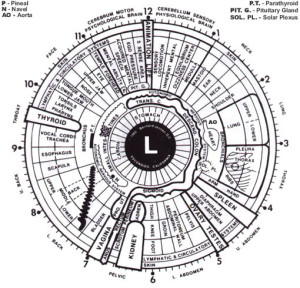 Iridology, also called iris analysis or iris diagnosis, is the study of the iris (the colored part of the eye). Iris “readings” are made by iridologists to assess a person’s health picture (physical, emotional, mental, and spiritual) and guide them to take measures to improve their health.
Iridology, also called iris analysis or iris diagnosis, is the study of the iris (the colored part of the eye). Iris “readings” are made by iridologists to assess a person’s health picture (physical, emotional, mental, and spiritual) and guide them to take measures to improve their health.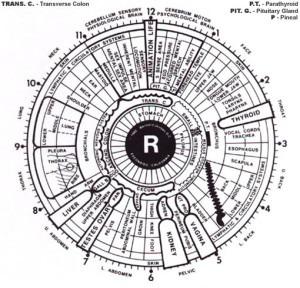 Iridology charts divide the iris into numerous zones corresponding to different parts of the body. Although the specifics may differ on each chart, all share a general pattern. The left eye is mapped to the left side of the body and the right eye to the right side. The top of the eye is mapped to the upper body (e.g., brain, face, neck, chest and heart). The center of the eye is mapped to the stomach and digestive organs, with other organs being represented by concentric circular zones moving outward toward the edge of the iris. The bottom of the eye is mapped to the legs and lower half of body. Paired organs (e.g., the kidneys) are mapped to both irises.
Iridology charts divide the iris into numerous zones corresponding to different parts of the body. Although the specifics may differ on each chart, all share a general pattern. The left eye is mapped to the left side of the body and the right eye to the right side. The top of the eye is mapped to the upper body (e.g., brain, face, neck, chest and heart). The center of the eye is mapped to the stomach and digestive organs, with other organs being represented by concentric circular zones moving outward toward the edge of the iris. The bottom of the eye is mapped to the legs and lower half of body. Paired organs (e.g., the kidneys) are mapped to both irises.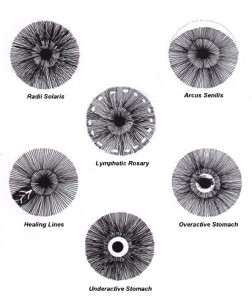 The basic concept of iridology has existed for centuries. The medical school of the University of Salerno in Italy offered training in iris diagnosis. A book published by Philippus Meyers in 1670, called Chiromatica medica, noted that signs in the iris indicate diseases. Dr. Ignatz von Peczely, however, is generally considered the father of iridology, with the date of his discovery given as 1861. Von Peczely was a Hungarian physician. As a child, he accidentally broke an owl’s leg. He observed that a black line formed in the owl’s lower iris at the time of the injury. After the owl’s leg healed, the young von Peczely noted that the black streak had changed appearance. As a physician, he treated a patient with a broken leg in whose eye he observed a black streak in the same location as on the injured owl’s iris. Von Peczely became intrigued by the possibility of a connection between diseases and eye markings. Through observing his patients’ eyes, he became convinced of this connection and developed a chart that mapped iris-body correlations. After several decades of comparative study, von Peczely mapped organs across zones identified by hours and minutes on a clock face superimposed over drawings of the eyes. In 1881, he published his theories in a book called Discoveries in the Field of Natural Science and Medicine: Instruction in the Study of Diagnosis from the Eye.
The basic concept of iridology has existed for centuries. The medical school of the University of Salerno in Italy offered training in iris diagnosis. A book published by Philippus Meyers in 1670, called Chiromatica medica, noted that signs in the iris indicate diseases. Dr. Ignatz von Peczely, however, is generally considered the father of iridology, with the date of his discovery given as 1861. Von Peczely was a Hungarian physician. As a child, he accidentally broke an owl’s leg. He observed that a black line formed in the owl’s lower iris at the time of the injury. After the owl’s leg healed, the young von Peczely noted that the black streak had changed appearance. As a physician, he treated a patient with a broken leg in whose eye he observed a black streak in the same location as on the injured owl’s iris. Von Peczely became intrigued by the possibility of a connection between diseases and eye markings. Through observing his patients’ eyes, he became convinced of this connection and developed a chart that mapped iris-body correlations. After several decades of comparative study, von Peczely mapped organs across zones identified by hours and minutes on a clock face superimposed over drawings of the eyes. In 1881, he published his theories in a book called Discoveries in the Field of Natural Science and Medicine: Instruction in the Study of Diagnosis from the Eye.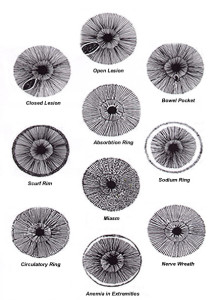 Iridologists claim that by studying the patterns of a person’s iris, they can provide helpful and accurate health and wellness information. iridology is a holistic endeavor in that it addresses the person’s whole being in the reading. The range of information gleaned encompasses physical, emotional, mental, and spiritual aspects of the person’s health picture. In addition to assessing the person’s general level of health, readings can reveal other data, including energy quotients; internal areas of irritation, degeneration, injury, or inflammation; nutritional and chemical imbalances; accumulation of toxins; life transitions; and subconscious tensions. Iridologists maintain that the eyes reveal information about the person’s physical and emotional constitution, such as inherited weaknesses and risks to which the person may be prone. Strengths may also be revealed, including inherited emotional tendencies from which the person derives particular talents. Cleansing and healing can be verified by changes in the iris. By looking for certain signs such as healing lines, iridologists obtain information about previous health problems and injuries and discover what may have gone wrong in the person’s past.
Iridologists claim that by studying the patterns of a person’s iris, they can provide helpful and accurate health and wellness information. iridology is a holistic endeavor in that it addresses the person’s whole being in the reading. The range of information gleaned encompasses physical, emotional, mental, and spiritual aspects of the person’s health picture. In addition to assessing the person’s general level of health, readings can reveal other data, including energy quotients; internal areas of irritation, degeneration, injury, or inflammation; nutritional and chemical imbalances; accumulation of toxins; life transitions; and subconscious tensions. Iridologists maintain that the eyes reveal information about the person’s physical and emotional constitution, such as inherited weaknesses and risks to which the person may be prone. Strengths may also be revealed, including inherited emotional tendencies from which the person derives particular talents. Cleansing and healing can be verified by changes in the iris. By looking for certain signs such as healing lines, iridologists obtain information about previous health problems and injuries and discover what may have gone wrong in the person’s past.
